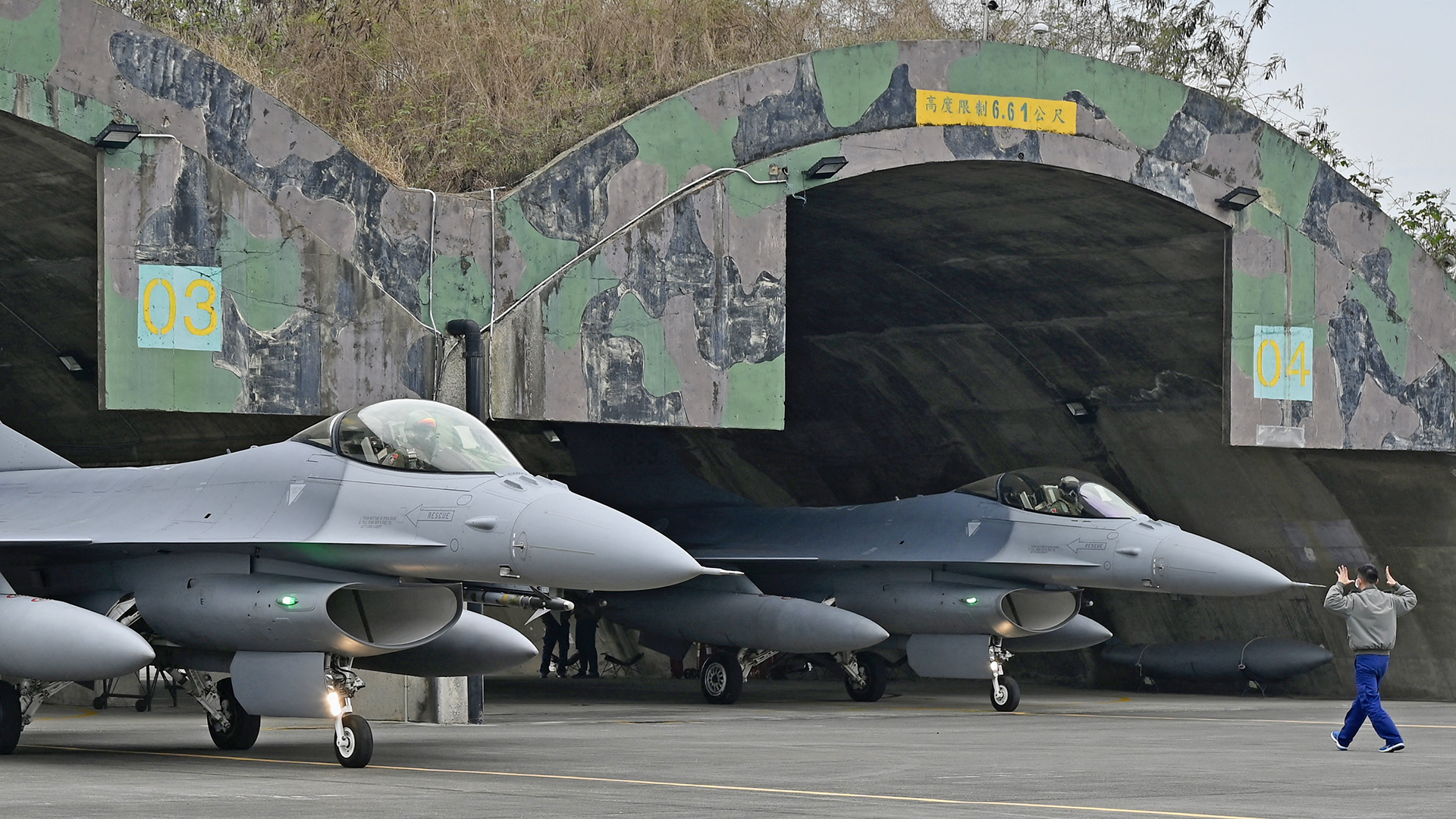With tensions this year between China and Taiwan rising to their highest since the Taiwan Strait Crisis of 1995-96, numerous pundits have posited that the possibility of actual conflict cannot be discounted in the years ahead.
At the launch of the 20th Communist Party Congress on October 16, President Xi Jinping vowed that China would “never commit to abandoning the use of force” to seize Taiwan. The conclusion of the congress saw him securing not only a historic third term as China’s leader but also placing loyalists in the leading party. This will ensure the consolidation of his grip on the country’s decision-making power with little opposition.
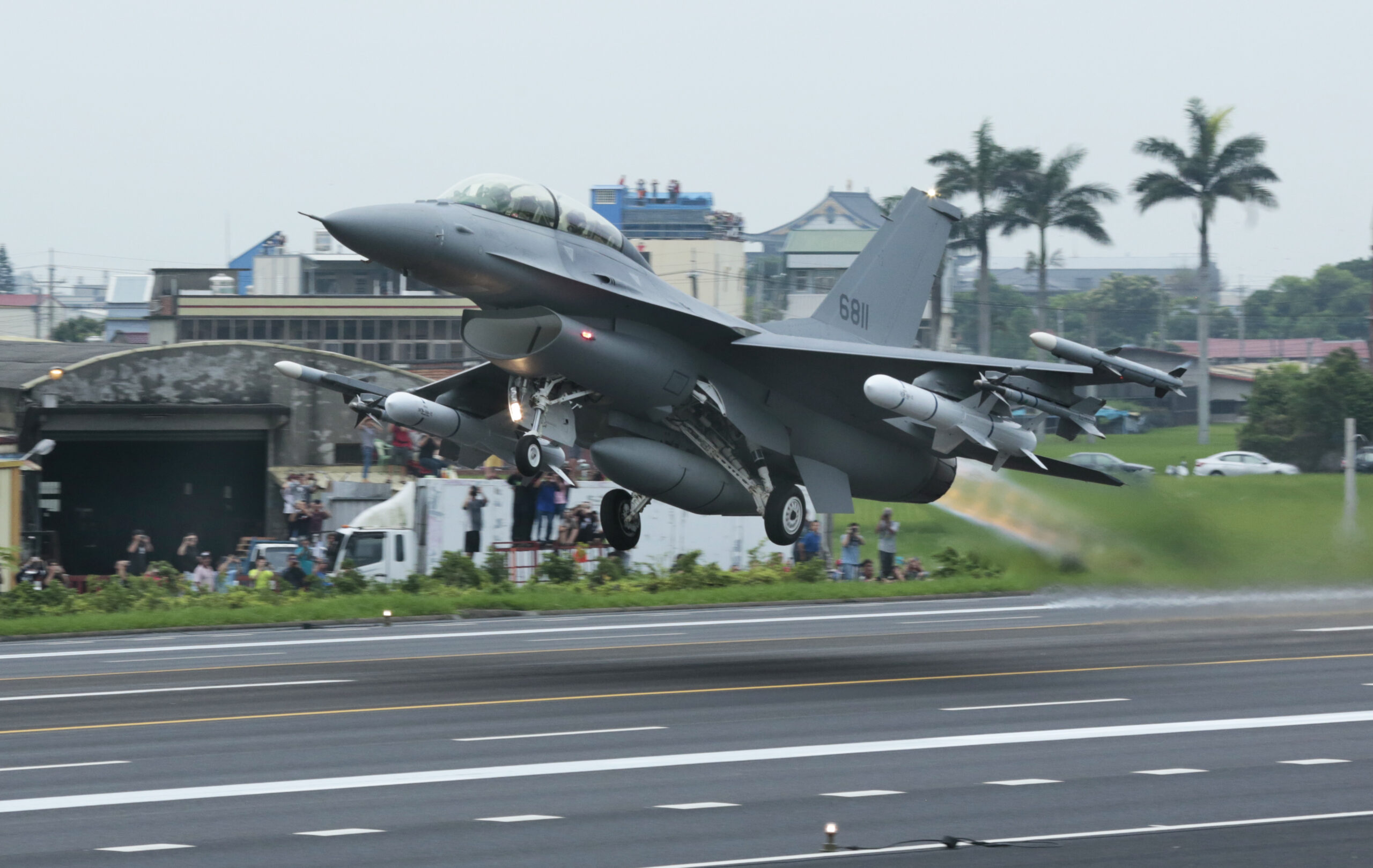
Xi has repeatedly flagged the unification of Taiwan with the mainland as an aspiration and could ultimately seek its fulfillment to secure his legacy. He will almost certainly toughen his stance on Taiwan and possibly increase the urgency of unification in the years ahead.
Many have floated 2027 — which also marks the centenary of the founding of the People’s Libreation Army (PLA) — as the year China could be capable of invading the island, including U.S. officials. CIA director William Burns told CBS Evening News in early October that although Xi’s preference is for unification to be achieved through peaceful means, he has instructed the PLA to be prepared no later than 2027 to conduct a successful invasion of Taiwan.

Capturing Taiwan by force will no doubt be a high-risk gambit and could prove to be politically destabilizing if war plans were to go awry. However, Beijing’s use of its soft power — through economic and cultural leverage — to draw the island closer has not yielded any results. Hence, it has turned to the use of hard power, in the form of the PLA, to apply coercion and intimidation.
Starting from ‘island encirclement’ drills by H-6 bombers from 2016 when independence-leaning President Tsai Ing-wen took office, China’s gray-zone assault on the island has been progressively stepped up to frequent incursions into its southwestern corner of the Air Defense Identification Zone (ADIZ) since 2020.

Led by U.S. House Speaker Nancy Pelosi, the congressional delegation to Taiwan in August 2022 provided Beijing further justification to escalate. Significant numbers of PLA aircraft were sortied over the tacitly agreed median line of the Taiwan Strait while warships sailed into its contiguous zone.
Short-range ballistic missiles were launched around and over Taiwan into designated closure zones, simulating a limited blockade of the island. An aerial and maritime blockade of Taiwan could potentially form the next tier of the use of its hard power, with the aim of choking Taiwan into submission. This would however impact the economic lifelines of Japan and South Korea and could draw them into the conflict — something Beijing might not want.
Appearing to up the ante, Taiwanese Defense Minister Chiu Kuo-cheng said at a meeting of the Legislative Yuan’s Foreign Affairs and National Defense Committee on October 6 that any Chinese incursion — aircraft, drone, or vessel — into Taiwan’s territory would be considered a ‘first strike.” This contrasts to the previous definition of a “first strike” in which Taiwan was facing an actual attack.
When asked to clarify what countermeasures would be in place for such a “first strike” in a separate session on October 12, Chiu mentioned that weapons will be trained onto the intruding subject — and a defensive “counterattack” would be launched if warnings remain unheeded. He acknowledged that such a counterattack against a “first strike” would mean both sides would go to war and that has been why the Taiwanese military has been exercising self-restraint.
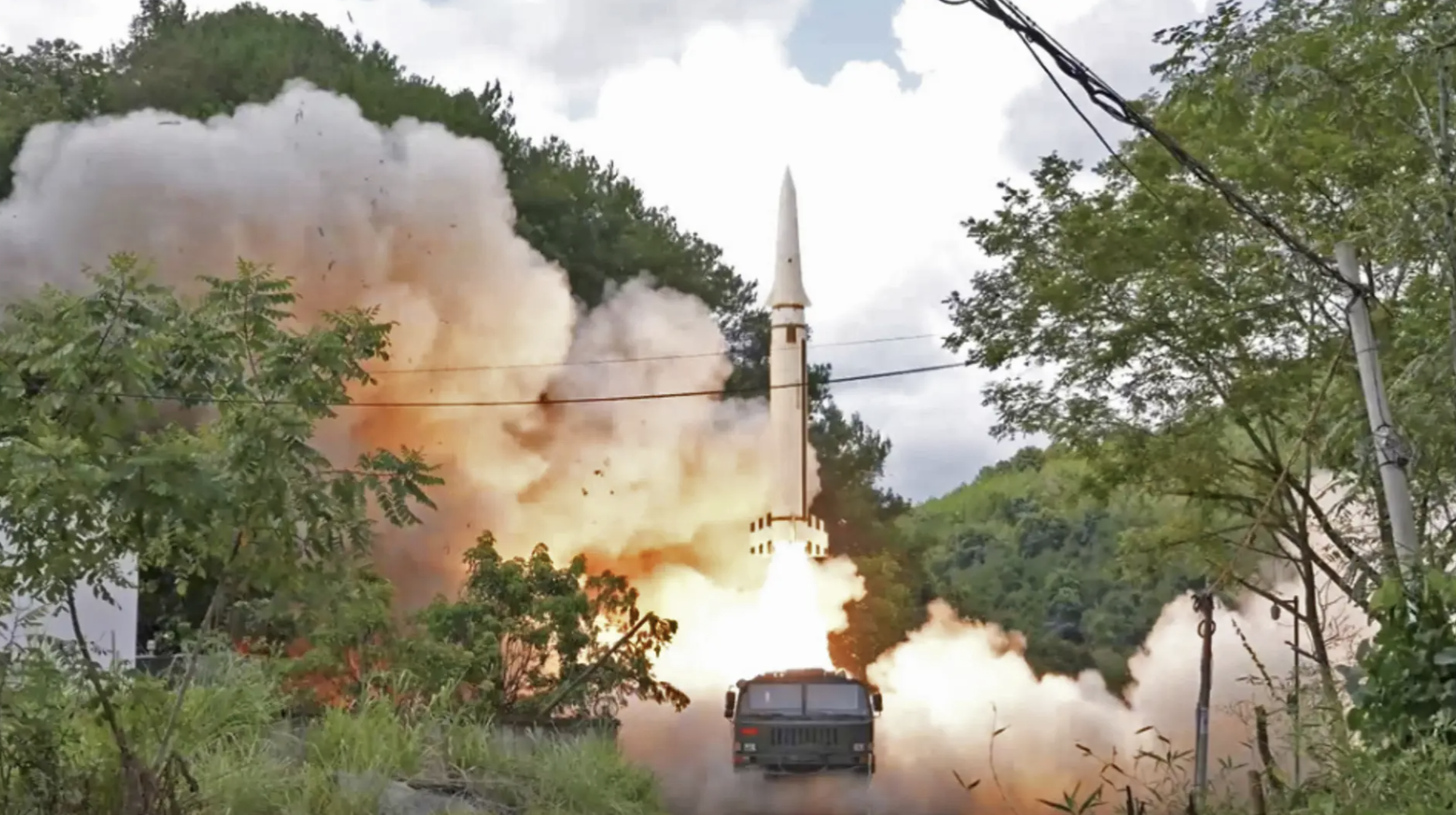
Nevertheless, the island’s military and political leadership would look out for numerous key indicators should military conflict be imminent following an actual “first strike”. Apart from various sources of intelligence, there will be large build-ups of PLA forces across the shore, the widespread deployment of naval assets, dispersion of long-range fires such as short and medium-range ballistic missile units from the PLA Rocket Force, and major stockpiling of supplies and logistical build-ups to support the war effort. The propaganda machine will be unleashed on the local population to support the cause and build resilience in the face of large-scale international sanctions.
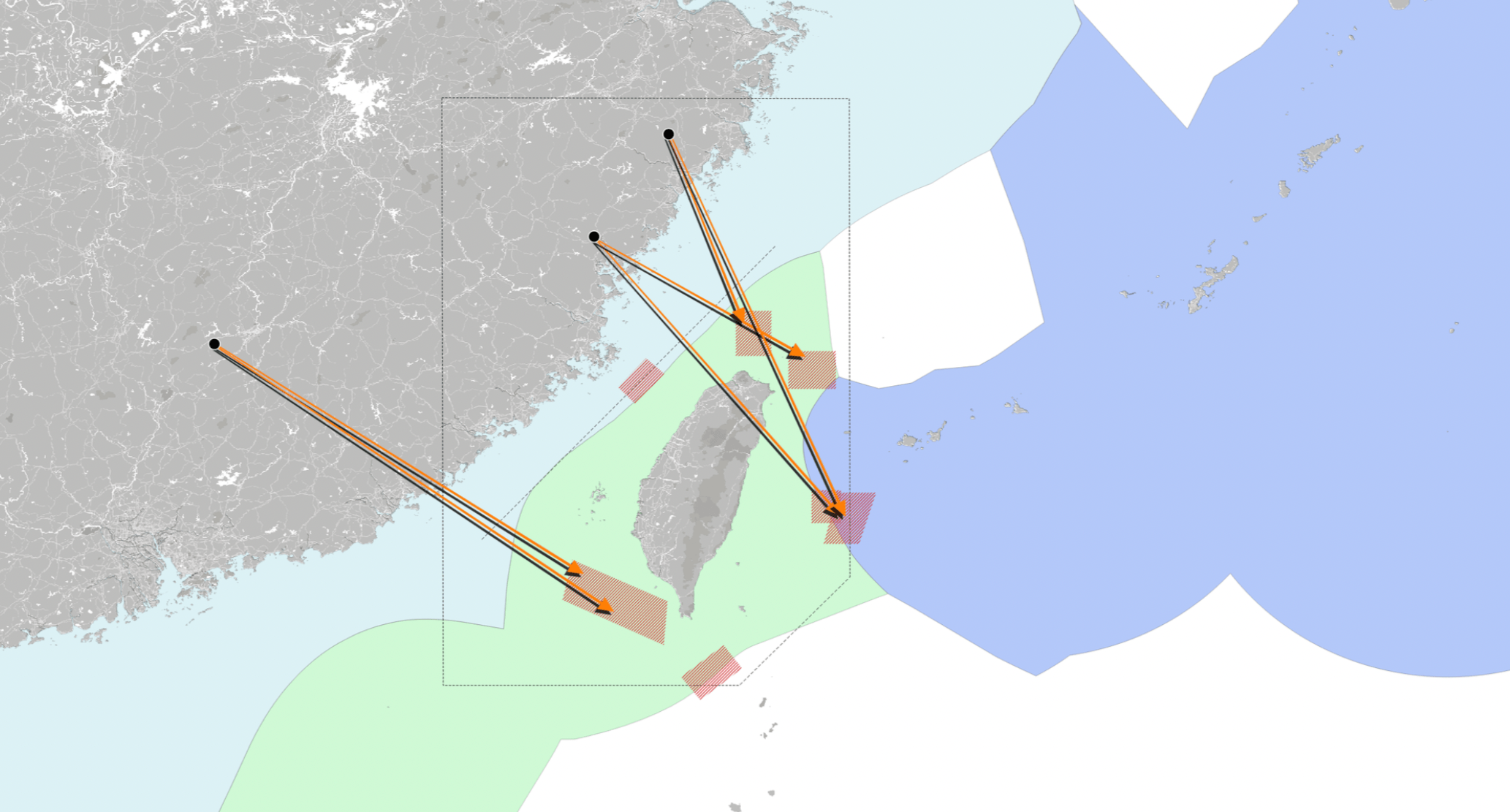
Taiwan’s current military readiness system is based on two general states: General Readiness and Emergency Readiness. The latter would have placed units on a war footing with conflict imminent. The general readiness state is further separated into three alert levels: General, Focused, and Enhanced. Due to escalating tensions arising from Pelosi’s visit in August, the alert posture of the ROC military was heightened to the Enhanced Readiness state — the highest of its three peacetime alert levels.
In the event of an upgrade of its defense posture, key Taiwan military leaders would begin proceeding into command and control facilities to supervise the military’s operations and response. The most prominent of these is the Joint Operations Command Center, more commonly known as the Hengshan Command Centre. Built into a mountain in the Taipei suburb of Dazhi, the hardened facility is a tri-service command and control center for the highest level of military officials. Local media reported that during the PLA drills, the Taiwanese defense minister and the ROC military’s Chief of the General Staff took turns supervising operations from the facility.

One other hardened facility is the Yuanshan Command Center, which is purported to shelter the president and certain members of the cabinet. The PLA is known to train for decapitation strikes against Taiwanese leadership, hoping to cripple decision-making and thereby lead to a swift victory. Another well-known facility is the ROC Air Force’s (ROCAF) Joint Air Operations Center (JAOC), which is built into Toad Mountain in southern Taipei. The facility is tasked with monitoring airspace in and around Taiwan and orchestration of operations against air threats.
ROC military units will be placed on alert. While tensions were escalating in August, ROC Army (ROCA) standby forces of each of its three Army Corps were upgraded from that of a company to a battalion. The ROCAF will also mount increased combat air patrols (CAPs) and have standby fighters readied to be scrambled.
Forward deployed at Magong Air Base on Penghu island — not too far from the median line that bisects the Taiwan Strait — F-CK-1C/D Indigenous Defense Fighters of the Tian Ju (Sky Horse) detachment will also be involved in the effort. The F-CK-1s, usually numbering over a dozen, are exclusively tasked with the Tian Ju mission due to their faster scramble time of five minutes. Comparatively, the ROCAF’s other fighter types, both the F-16 and Mirage 2000, require an extra minute.
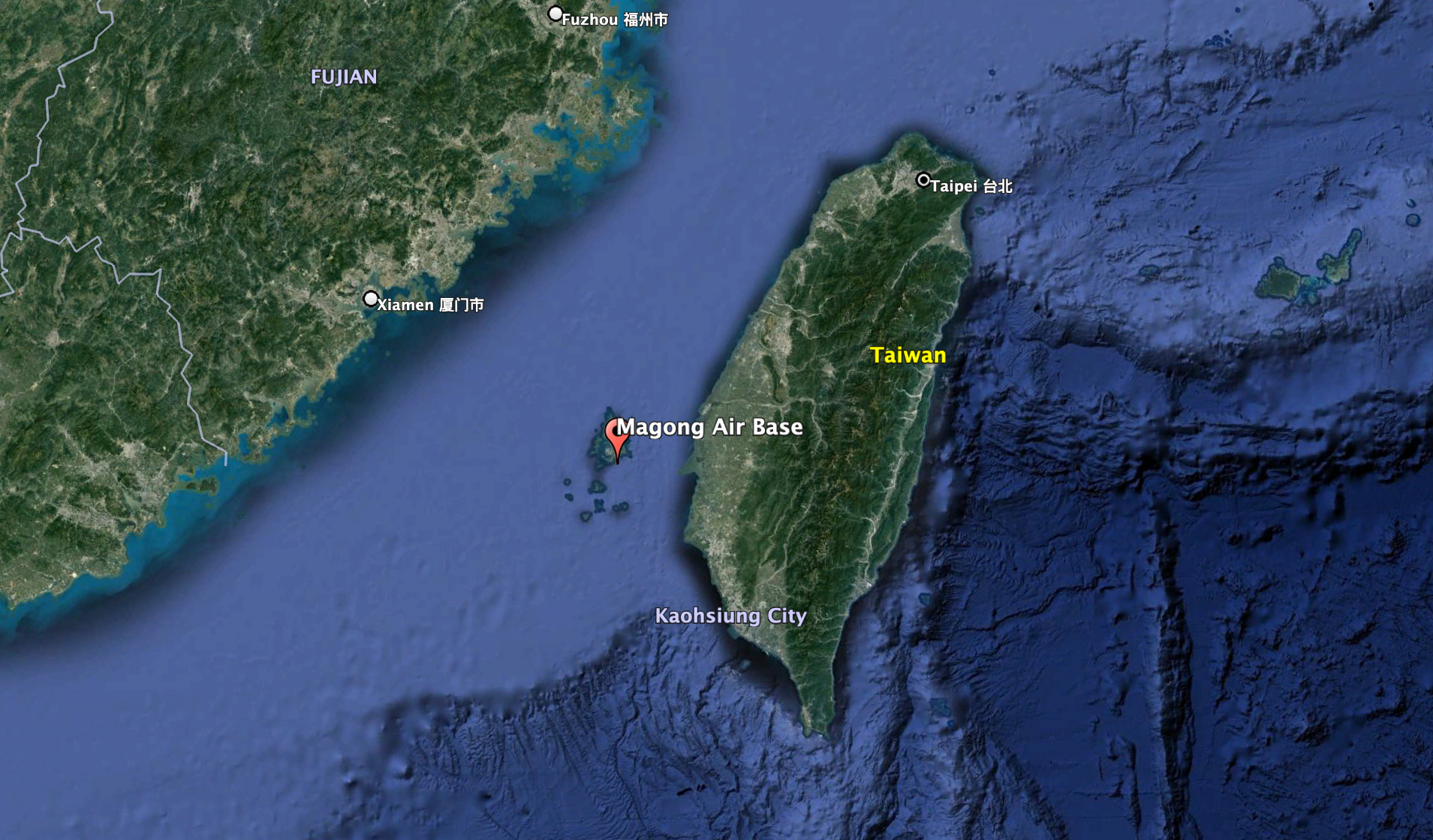
The Magong forward deployment allows scrambling fighters a quicker transit time to intercept encroaching PLA aircraft and was, for the past decades, conducted in the spring and summer months due to favorable weather conditions along the straits. However, since late 2020, it has been extended to provide coverage over much of the year due to increased PLA air activity within Taiwan’s ADIZ.
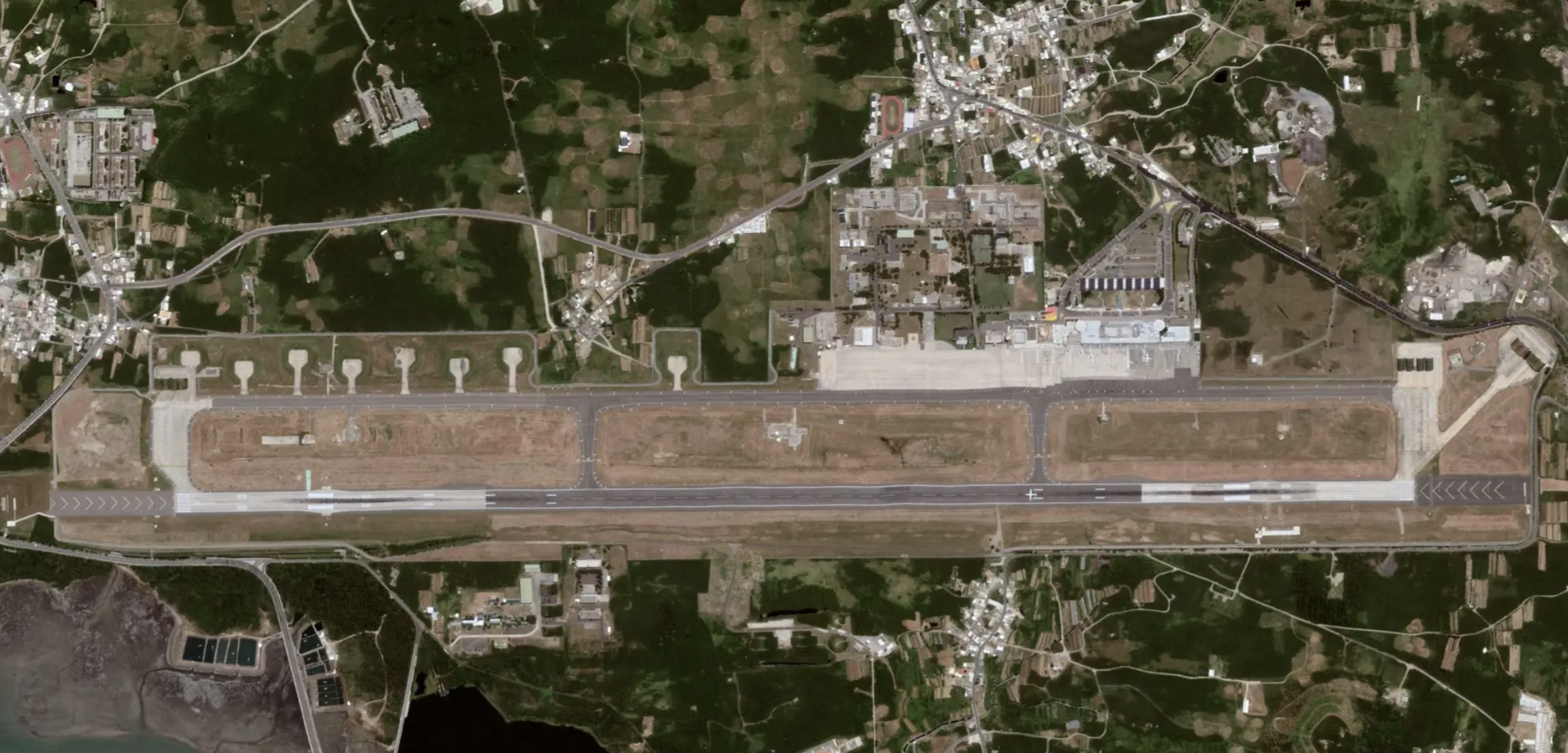
Taiwan’s military response to any aggression from China is guided by its national defense plan, known as the Gu’an (Solid and Secure) Operational Plans (OPLANs). Little is known about it, but like any competent military with OPLANs, it implements Taiwan’s defense strategy and is thought to be a robust playbook for different conflict scenarios, including a full-scale invasion. The plan is constantly refined based on the understanding of new threats and the induction of new defensive capabilities. Lessons learned from the ongoing conflict in Ukraine and the PLA exercises around Taiwan in August would certainly be part of reviews of the Gu’an OPLANs.
A looming conflict would see Taiwan place emergency orders for ammunition for its three armed services. In particular, it is thought that current stocks of missiles for the ROCAF will last for only a few days in high-intensity warfare and that additional deliveries will be critical to sustaining its combat ability. Taiwan had placed such an order with the United States during the 1996 Strait Crisis, but this was canceled after tensions were reduced. It is noteworthy that once hostilities occur, resupplying the island would be far more complicated than the current effort with Ukraine, made worse with the PLA’s expanding anti-access/area denial (A2/AD) capabilities.

Supplementing those delivered from overseas, Taiwan’s own local defense production facilities will work non-stop in manufacturing anything from ammunition for small arms to Tien-Chien (Sky Sword) air-to-air missiles, Tien-Kung (Sky Bow) III surface-to-air anti-ballistic missile systems to the secretive Hsiung Sheng land attack cruise missiles. While currently under discussion, should a Taiwan-U.S. weapons production plan come to fruition, U.S.-designed weapons could be produced locally to increase production capacity for the island.
The exact timeline and sequence of war preparations by the ROC military are classified for good reason. However, one could make a good inference through an analysis of military exercises. The most high-profile of the preparations would be the establishment of ROCAF airstrips on public highways. Located in the vicinity of airbases, five acknowledged highway sites have been built from the ground up for quick conversion to undertake fixed-wing aircraft operations. While publicized as a backup for the airbases should they be rendered unserviceable, the airstrips could also function as dispersal sites to complicate PLA targeting of ROCAF’s airpower-generation capabilities.
Retired Colonel Huang Yang-te is a former commander of an F-16A/B squadron and had operated into the Madou airstrip near Tainan Air Base in 2011. He stated that each air base would have one or two alternate runways in the form of a taxiway or a converted airstrip. “When indications are that hostilities could occur, the defense ministry would direct the set-up of highway airstrips. This could be done relatively quickly due to regular maintenance and established procedures that would call upon the support of civilian and military agencies.”

With PLA’s ability to employ more than 2,000 short- and medium-range ballistic missiles and both ground and air-launched cruise missiles against the island, the ROC military would enter a force-preservation phase to sustain and ride out the initial missile waves, which are expected to be sustained and voluminous at the onset of armed conflict.
Aside from dispersal, the ROCAF also has an established doctrine emphasizing hardening to ensure survivability. The majority of the ROCAF frontline fighter fleet, currently comprising 140 F-16s, 54 Mirage 2000s, and 129 F-CK-1s, would evacuate to the Chiashan and Shizishan hardened facilities located at Hualien and Taitung respectively.

Both bases were conceptualized in the early 1980s under Project Jian’an (Build Safe) and are speculated to be able to shelter the majority of Taiwan’s fighter force. Surrounded by the Central Mountain Range and only with its eastern flank exposed, they were thought to be a safe sanctuary when conceived. Their survivability is now less certain since the PLA has demonstrated round-island operations and introduced bunker-busting munitions.

ROCAF ground-based air defense units would fan out across the island to defend key assets such as radars and bases against air attacks. Patriot Advanced Capability 2 (PAC-2) and PAC-3 batteries, as well as the locally developed Tien Kung III, would hope to thin down the missile barrages that will rain down on Taiwan. Concurrently, ROCAF’s secretive truck-mounted offensive missile systems, such as the Hsiung Sheng and Yun Feng (Cloud Peak) cruise missiles will also go into hiding to await orders to launch against PLA targets across the strait as part of Taiwan’s counterstrike capabilities.
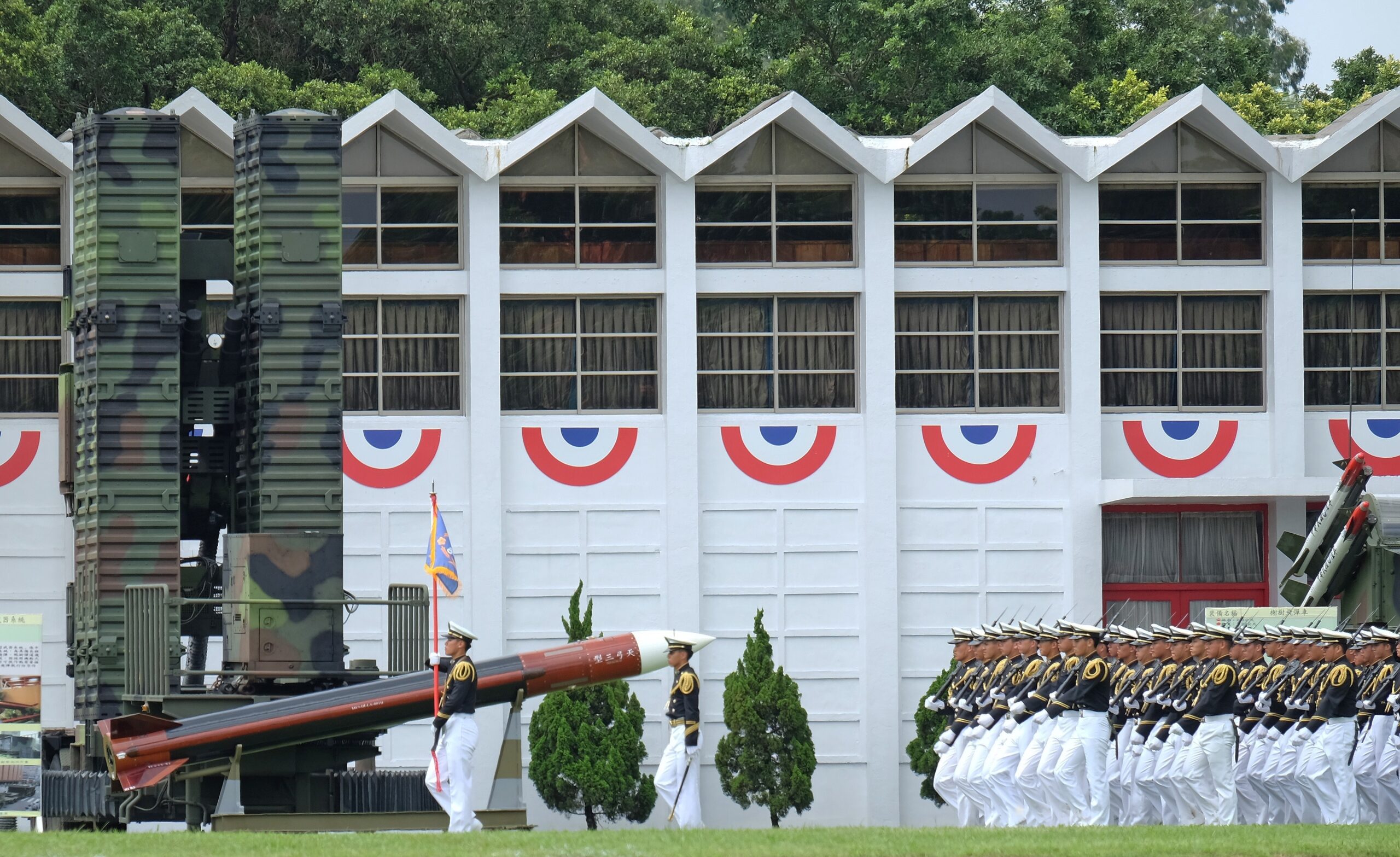
At the maritime front, military escalations would have already seen all sea-worthy ROC Navy (ROCN) ships pressed out to sea. While doctrine calls for the surface combatants to sail to waters off Taiwan’s eastern seaboard to ride out the missile attacks, this is now less feasible as the PLA has demonstrated its ability to not only project its capable navy around the island but to also launch anti-ship ballistic missiles from the mainland.
The four Kee Lung class destroyers, with their SPS-48E 3D air search radar and SM-2 missiles, would provide not only a relatively capable shipborne air defense capability but also air surveillance redundancy should Taiwan’s land-based radars be knocked out. Six Chi Yang (Knox) class frigates, while antiquated, offer the ROCN the fleet’s most capable anti-submarine warfare capability with its various sonar and ASROC systems.

Naval minefields will be laid by ROCN ships, such as the four Min Jiang class minelayers. Belts of various mines laid in the Taiwan Strait and along the coast and ports will form part of Taiwan’s A2/AD strategy against PLAN vessels attempting to exert sea control and amphibious task forces.

Just like the missile units of its air force counterparts, the ROCN Hai Feng brigade, equipped with subsonic Hsiung Feng 2 and supersonic Hsiung Feng 3 mobile missile batteries, would deploy at designated sites and await targeting orders against PLAN ships. Harpoon coastal defense batteries will join the brigade’s missile arsenal beginning in the mid-2020s.
For the land domain, there will be mass call-ups for reservists to supplement Taiwanese regular forces. Units of the ROCA would seek to hunker down in hardened facilities or attempt to conceal for subsequent regeneration. They will be expected to counter possible PLA amphibious assaults and seizures of sea and airports — facilities that would enable the delivery of the bulk of the PLA invasion force. Strong points, including trenches and hidden machine-gun nests, and ambush sites will be established as part of a larger frontline defense system.
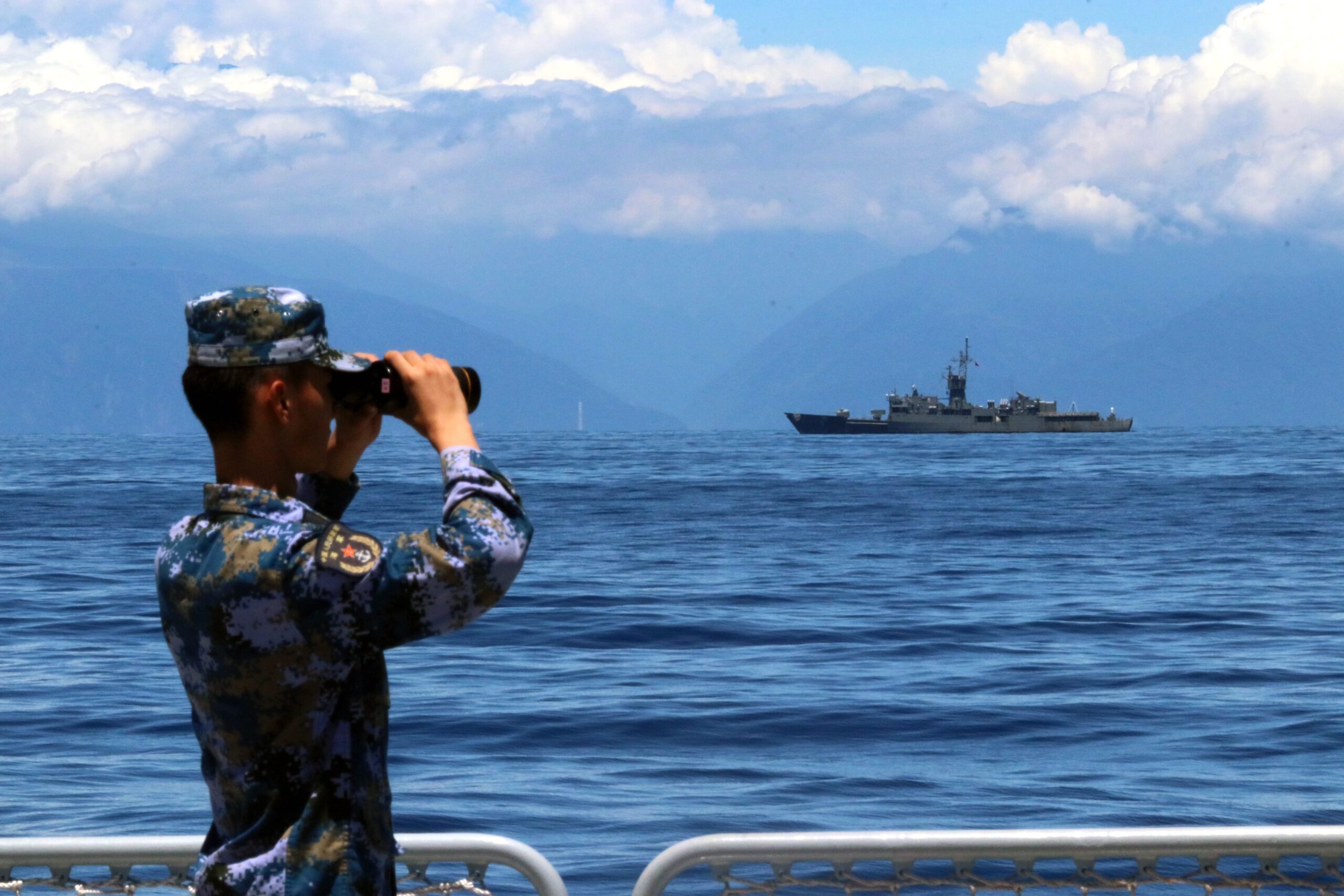
ROCA Aviation and Special Forces Command’s attack and utility helicopters would also deploy off-base to dispersed sites such as parks and stadiums, an operation it trains for during the Han Kuang exercises.
In a Taiwan invasion scenario, the ultimate aim of the ROC military would be to hold out unassisted for at least two weeks — a duration that a number of defense officials have mentioned — in the hope that the U.S. or the international community would come to its aid. With Washington’s policy of ‘strategic ambiguity,’ it remains to be seen if it would actually commit its military to the defense of the island. It must be noted, however, that the lack of any significant interoperability training between Taiwanese and American militaries could limit their effectiveness if both forces were to conduct joint combat operations in the defense of Taiwan.
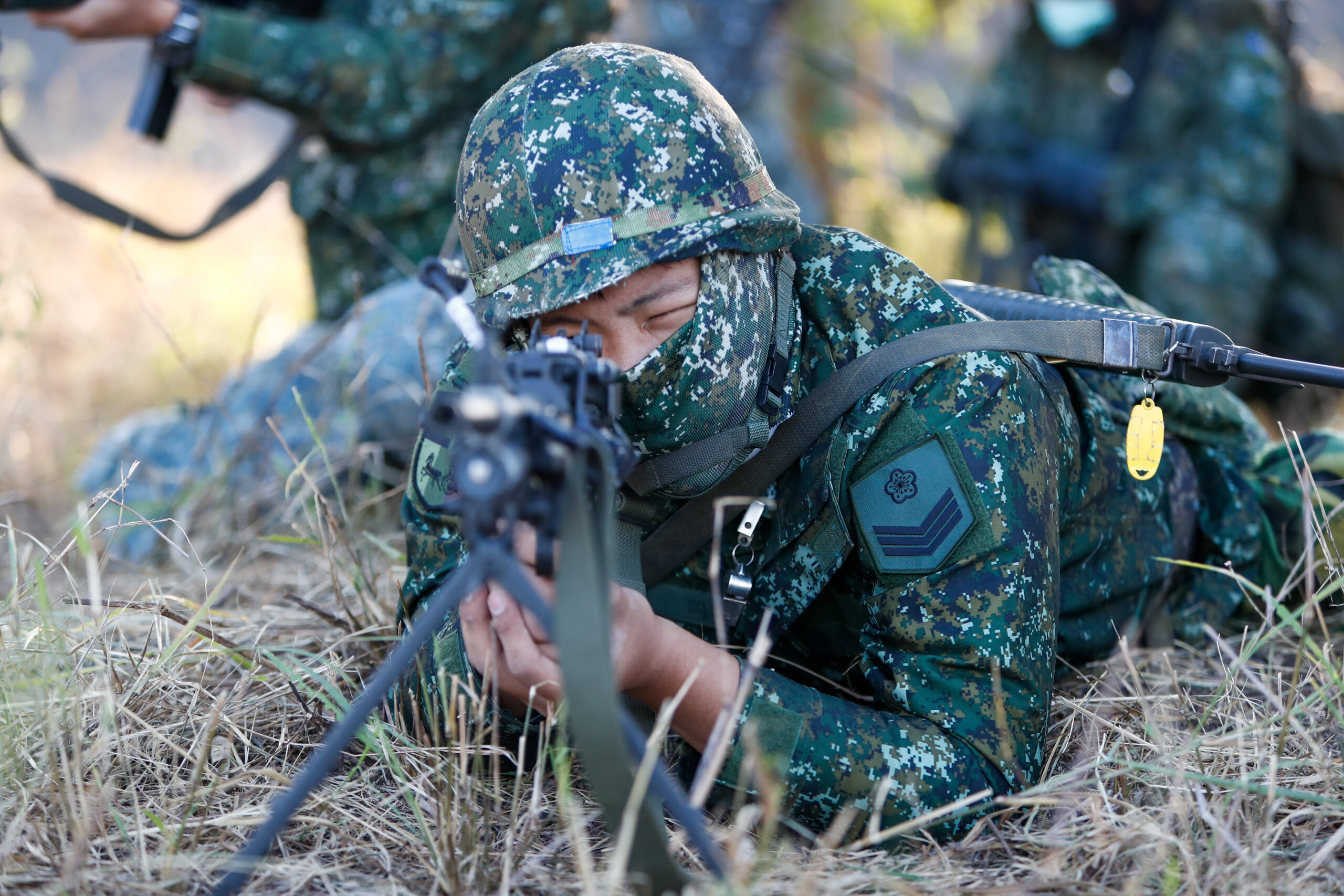
An invasion of Taiwan will be among the most devastating conflict in recent times and will result in great loss of life and property — something, it would be hoped, that no key decision-makers should even consider.
Roy Choo is an aviation and defense journalist and photographer and the lead author of the book Modern Taiwanese Air Power.
Contact the editor: Thomas@thedrive.com
